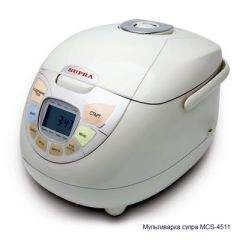Елена Беликова - Английский язык

Скачивание начинается... Если скачивание не началось автоматически, пожалуйста нажмите на эту ссылку.
Жалоба
Напишите нам, и мы в срочном порядке примем меры.
Описание книги "Английский язык"
Описание и краткое содержание "Английский язык" читать бесплатно онлайн.
Студенту без шпаргалки никуда! Удобное и красивое оформление, ответы на все экзаменационные вопросы ведущих вузов России.
Proteins are essential for the growth and rebuilding of tissue, but they can also be utilized as a source of energy. In some diets, such as the diet of the Eskimo, they form the main source of energy. Proteins are first broken down into amino acids. Then they are absorbed into the blood and pass round the body. Amino acids not used by the body are eventually excreted in the urine in the form of urea. Proteins, unlike-car-bohydrates and fats, cannot be stored for future use.
New wordsfuels – топливо
principal source – основной источник
energy – энергия
glucose – глюкоза
glycogen – гликоген
stored – сохраненный
adipose – животный жир
amino acids – аминокислоты
47. The urinary system: embriogenesis
The urinary system is formed mainly from mesodermal and endodermal derivatives. Three separate systems form sequentially. The pronephros is vestigial; the mesonephros may function transiently, but then mainly disappears; the metanephros develops into the definitive kidney. The permanent excre tory ducts are derived from the metanephric ducts, the urogenital sinus, and surface ectoderm.
Pronephros: Segmented nephrotomes appear in the cervical intermediate mesoderm of the embryo in the fourth week. These structures grow laterally and canalize to form nephric tubules. Successive tubules grow caudally and unite to form the pronephric duct, which empties into the cloaca. The first tubules formed regress before the last ones are formed.
Mesonephros: In the fifth week, the mesonephros appears as «S-shaped» tubules in the intermediate mesoderm of the thoracic and lumbar regions of the embryo.
The medial end of each tubule enlarges to form a Bowman's capsule into which a tuft of capillaries, or glomerulus, invaginates.
The lateral end of each tubule opens into the meson-ephriс (Wolffian) duct.
Mesonephric tubules function temporarily and degenerate by the beginning of the third month. The mesonephric duct pesists in the male as the ductus epididymidis, ductus deferens, and the ejaculatory duct.
Metanephros: During the fifth week, the metanephros, or permanent kidney, develops from two sources: the ureteric bud, a diverticulum of the mesonephric duct, and the metan-ephricmas, from intermediate mesoderrn of the lumbar and sacral regions. The ureteric bud penetrates the metanephric mass, which cordenses around the diverticulum to form the metanephrogen cap. The bud dilates to form the renal pelvis. One-to-three million collecting tubules develop from the minor calyces, thus forming the renal pyramids. Penetration of collecting tubules into the metanephric mass induces cells of the tissue cap to form nephrons, or excretory units. The proximal nephron forms Bowman's capsule, wherea the distal nephron connects to a collecting tubule.
Lengtheningy of the excretory tubule gives rise to the proximal convoluted tubule, loop of Henle, and the distal convoluted tubule.
The kidneys develop in the pelvis but appear to «as-cend» into the abdomen as a result of fetal growth of the lumbar and sacral regions.
The upper and largest part of the urogenital sinus becomes the urinary bladder, which is initially continuous with the allantois. Later the lumen of the allantois becomes obliterated. The mucosa of the trigone of the bladder is formed by the incorporation of the caudal mesonephric ducts into the dorsal bladder wall. This mesodermal tissue is eventually replaced by endodermal epithelium so that the entire lining of the bladder is of endodermal origin. The smooth muscle of the bladder is derived from splanchnic mesoderm.
Mile urethra is anatomically divided into three portions: prostatic membranous, and spongy (penile).
The prostatic urethra, membranous urethra, and proximal penile urethra develop from the narrow portion of the urogenital sinus below the urinary bladder. The distal spongy urethra is derived from the ectodermal cells of the glans penis.
Fimale urethra: The upper two-thirds develops from the esonephric ducts, and the lower portion is derived from the ogenital sinus.
New wordsurinary system – мочевая система
kidneys – почки
bladder – мочевой пузырь
excretory ducts – выделительные трубочки
pronephros – первичная почка
urogenital – мочеполовой
48. The urinary system: kidneys
The urinary system is the major system involved in the excretion of metabolic waste products and excess water from the body It is also important in maintaining a homeostatic balance of fluids and electrolytes. The urinary system consists of two kidneys, two ureters, the urinary bladder, and the urethra. Urine is produced by the kidneys and is then transmit ted via the ureters to the bladder for temporary storage The urethra is the final pathway that conveys urine to the exterior. This system also has an important endocrine function in the production of renin and erythropoietin, which influence blood pressure and red blood cell (RBC) formation, respec tively.
Each kidney is composed of stroma and parenchyma. The stroma consists of a tough fibrous connective tissue capsule and a delicate interstitial connective tissue com posed of fibroblasts, wandering cells, collagen fibrils, and a hydrated proteoglycan extracellular matrix, which is collec tively called the renal interstitium The parenchyma consists of more than one million elaborate uriniferous tubules that represent the functional units of the kidney.
The kidney contains a hilum, a cortex, and a medula. The hilum is located medially and serves entrance as the point of entrance and exit for the renal artery, renal veins, and ureter. The renal pelvis, the expanded upper, divides into two or three entrance into the kidney. These, in turn, divide into eight minor calyces.
The cortex forms the outer zone of the kidney.
The medulla appears as a series of medullary pyramids. Two or three pyramids may unite to form a papilla. Uriniferous tubules consist of two functionally related portions called the nephron and the collecting tubule
Glomerulus is made up of several anastomotic capillary loops interposed between an afferent and an efferent arteriole. Plasma filtration occurs in the glomerulus.
Bowman's capsule consists of an inner visceral layer and an outer parietal layer. The space between these layers, the urinary space, is continuous with the renal tubule.
Visceral layer is apposed to the glomerulus and closely follows the branches of the glomerular capillaries. The visceral layer is composed of a single layer of epithelial cells resting on a basal lamina, which is fused with the basal lamina of the capillary endothelium. The cells of the visceral layer, call podocytes.
Cytoplasmic extensions of podocytes rest on the basal lamina.
Between adjacent pedicles, a thin slit diaphragm assists in preventing large plasma proteins from escaping from the vascular system.
In fact, most of the components of the glomerular filtrate are reabsorbed in the proximal tubule. Loop of Henle is a hairpin loop of the nephron that extends into the medulla and consists of thick and thin segments. The thick proximal portion of Henle's loop, or the descending thick segment, is a direct medullary continuation of the cortical proximal convoluted tubule.
The thick distal portion of the loop of Henle, the ascending thick segment, ascends to the cortex and is continuous with distal convoluted tubule. The major function of the distal tubule is to reabsorb soduim and chloride from the tubular filtrate. Collecting tubules consist of arched and straight segments.
New wordsurea – моча
stroma – строма
parenchyma – паренхима
fibrous capsule – волокнистая капсула
delicate – тонкий
interstitial – промежуточный
49. The urinary system: kidney vascular sypply
Vascular supply begins with the renal artery, enters the kidney the hilum, and immediately divides into interlobar arteries The arteries supply the pelvis and capsule before passing direct between the medullary pyramids to the corticomedullary junction The interlobar arteries bend almost 90 degrees to form shoarching, arcuate arteries, which run along the corticomedullary junction. The arcuate arteries subdivide into numerous fine interlobul arteries, which ascend perpendicularly to the arcuate arteries through the cortical labyrinths to the surface of the kidney. Each interlobular artery passes midway between two adjacent medullary rays.
The interlobular arteries then give off branches that become the afferent arterioles of the glomeruli.
As the afferent arteriole approaches the glomerulus, some its smooth muscle cells are replaced by myoepithelioid cells, which are part of the juxtaglomerular apparatus. The juxtaglomerular apparatus consists of juxtaglomerular cells, polkissen cells, and the macula densa.
Cells of the distal convoluted tubule near the afferent arteriole are taller and more slender than elsewhere in the distal tubule.
The juxtaglomerular cells secrete an enzyme called renin, which enters the bloodstream and converts the circulating polypeptide angiotensinogen into angiotensin I. Angiotensin I is converted to angiotensin II, a potent vaso constrictor that stimulates aldosterone secretion from the adrenal cortex. Aldosterone increases sodium and water reabsorption in the distal portion of the nephron.
Their nuclei are packed closely, so the region appear darker under the light microscope. The macula densa is thought to sense sodium concentration in the tubular fluid.
Polkissen cells are located between the afferent and ef-fer ent arterioles at the vascular pole of the glomerulus, adja cent to the macula densa.
Their function is unknown. Efferent glomerular arteriole divides into a second system of capillaries, the peritub-ufar plexus, which forms a dense net work of blood vessels around the tubules of the cortex.
Arterial supply of the medulla is provided by the efferent arte rioles of the glomeruli near the medulla. The arterio-lae rectae and the corresponding venae rectae with their respective capillary networks comprise the vasa recta, which supplies the medulla. The endothelium of the venae rectae is fenestrated and plays an important role in maintaining the osmotic gradi ent required for concentrating urine in the kidney tubules.
New wordsrenal artery – почечная артерия
renal veins – почечные вены
expanded upper – расширенный верхний
minor calyces – незначительные чашечки
to supply – снабжать
arcuate arteries – дугообразные артерии
to subdivide – подразделять
numerous – многочисленный
interlobul – междолевой
to ascend – поднимать
perpendicularly – перпендикулярно
arcuate arteries – дугообразные артерии
50. The urinary system: ureters, uretra
The calyces, renal pelves, and ureters constitute the main excretory ducts of the kidneys. The walls of these structures, in particular the renal pelvis and ureter, consist of three coats: an inner mucosa, middle muscularis, and an outer adventitia.
Mucosa of the calyces and ureter is lined by a transitional epithelium, which varies in thickness with the distention of the ureter. In the collapsed state, the cells are cuboidal with larger с shaped cells in the superficial layer. In the relaxed state, the lumen of the ureter is thrown into folds that generally disappear when the organ dilates during urine transport. Muscularis consists of an inner longitudinal and an outer circular layer of smooth muscle. In the distal ureter, an additional discontinuous outer longitudinal layer is present.
Adventitia consists of loose connective tissue with many large blood vessels. It blends with the connective tissue of the surrounding structures and anchors the ureter to the renal pelvis. The urinary bladder functions as a strong organ for urine. The structure of the wall of the bladder is similar to but thicker than of the ureter. Mucosa of the urinary bladder is usually folded, depending the degree of the bladder distention. The epithelium is transitional and the number of apparent layers depends on the fullness of the bladder. As the organ becomes distended, the superficial epithelial layer and the mucosa become flattened, and the entire epithelium becomes thinner. At its fullest distention, the bladder epithelium maybe only two or three cells thick. Lamina propria consists of connective tissue with abundant elastic fibers. Muscularis consists of prominent and thick bundles of smooth muscle that are loosely organized into three layers. Adventitia covers the bladder except on its superior part, where serosa is present. Male urethra serves as an excretory duct for both urine and semen. It is approximately 20 cm in length and has three anatom ic divisions. The prostatic portion is lined by transitional epithelium similar to that of the bladder. The prostatic urethra is surrounded by the fibromuscular tissue of the prostate, which normally keeps the urethral lumen closed. In the membranous and penile portions, the epithelium is pseudostratified up to the glans. At this point, it becomes stratified squamous and is continuous with the epidermis of the external part of the penis. The membranous urethra is encircled by a sphincter of skeletal muscle fibers from the deep transverse perineal muscle of the urogenital diaphragm, which also keeps the urethral lumen closed. The wall of the penile urethra contains little muscle but is surrounded and supported by the cylindrical erectile mass of corpus spongiosum tissue. Female urethra is considerably shorter than that of the male urethra. It serves as the terminal urinary passage, conducting urine from the bladder to the vestibule of the vulva. The epithelium begins at the bladder as a transitional variety and becomes stratified squamous with small areas of a pseudostratified columnar epithelium. The muscularis is rather indefinite but does contain both circu lar and longitudinal smooth muscle fibers. A urethral sphincter is formed by skeletal muscle as the female urethra passes through the urogenital diaphragm.
New wordsureter – мочеточник
renal pelvis – почечная лоханка
calyces – чашечки
urethra – уретра
51. The kidney`s function
The kidneys are filters which remove waste products from the blood. In the human each is a bean-shaped organ, some four inches long and about two inches wide. The two are situated high up on the posterior abdominal wall behind the peritoneum and in front of the lats ribs and the upper two lunbar transverse processes. Each is invested by a fibrous capsule surrounded by more or less perinephric fat. On the upper pole of each is a supra-renal gland. On the medical side is a notch called the hilum where the vessels and the ureter are attached.
Vertical selections through a kidney discloses three more or less concentric zones. The other light-colored zone is the renal cortex, within this is the darker renal medulla and within this again is a space – the renal sinus which is normally occurred by a fibrous bag called the renal pelvis. The pelvis opens below into the ureter. The cortex extends inwards in a series of renal columns which divide the medulla into a number of renal pyramids. Each pyramid has a free rounded projection – a renal papilla – which lies in a cap – like extension, of the pelvis cal led a renal calyx. The pelvis is lined by transitioual epithelium, which extends the calyces and covers the papillae
Подписывайтесь на наши страницы в социальных сетях.
Будьте в курсе последних книжных новинок, комментируйте, обсуждайте. Мы ждём Вас!
Похожие книги на "Английский язык"
Книги похожие на "Английский язык" читать онлайн или скачать бесплатно полные версии.
Мы рекомендуем Вам зарегистрироваться либо войти на сайт под своим именем.
Отзывы о "Елена Беликова - Английский язык"
Отзывы читателей о книге "Английский язык", комментарии и мнения людей о произведении.
























